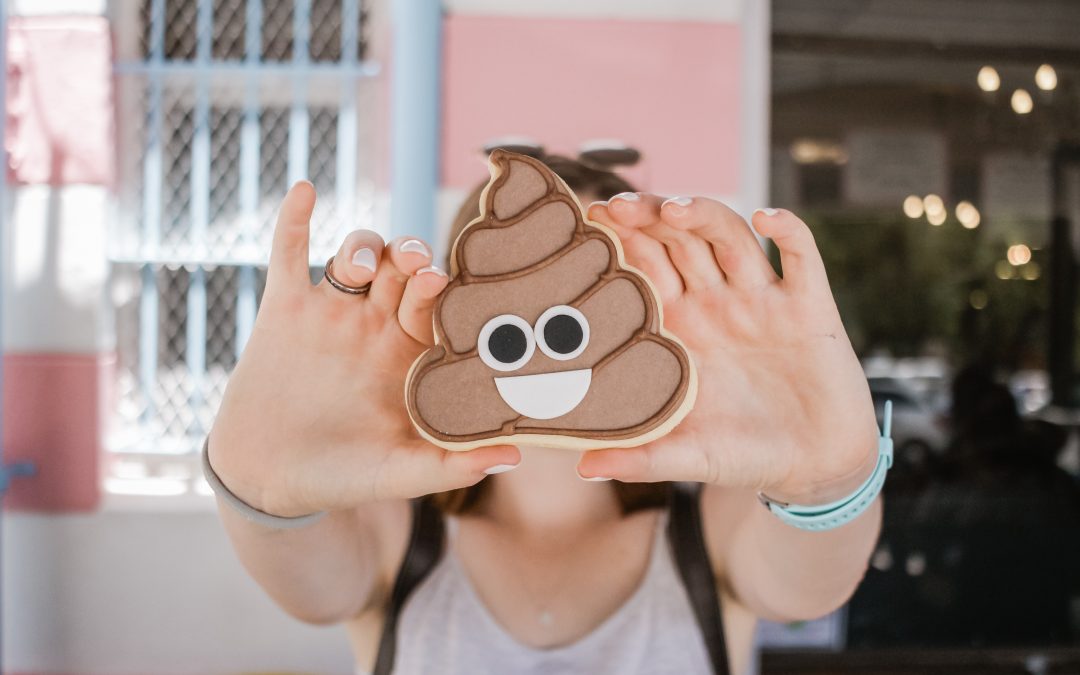We all do it. For some, it’s a necessary inconvenience. For others, it’s a pleasant and satisfying part of the digestive process. It has fascinated toddlers since time immemorial, and there’s a reason for that.
Going number two might not be the prettiest topic for a dinner party, but there’s a lot to learn from this mundane, yet mysterious, process. In the end (no pun intended), it’s simply a part of our functioning body.
So, what exactly is poop?
Well, it’s mostly just undigested food, proteins, bacteria, salts, and other substances that are produced and released by intestines. Although everyone is unique in the size, shape, and smell of their poop, there are a few things that indicate a healthy (or unhealthy) poop.
What is normal poop?
Healthy poop can be as varied and as unique as the individuals who make it. But there are a few general rules to follow if you want to assess your stool for optimum health.
Color
Shape
A somewhat log-like shape is how most poop should come out due to its formation within the intestines. However, as we’ll get to later, there are a variation of shapes that poop can have.
And when they differentiate from the log/sausage shape, that’s when your poop is trying to tell you something’s up.
Size
Poops shouldn’t come out in small pellets, but instead should be a couple inches in length, comfortable and easy to pass.
Consistency
Anywhere between a firm and soft consistency is pretty much normal. If it sways one way or another, it could suggest some digestion or fiber issues.
Length of time (how long it takes)
A healthy poop, however, should be easy to pass and take only a minute to push out. That said, some people do spend a bit more time on the toilet, so as a general rule, a poop should take no more than 10 to 15 minutes. If you spend more than 10 minutes at time sitting on the toilet you’re running the risk of developing hemorrhoids.
Frequency (how often)
Fun fact: Did you know most people poop around the same time every day?
On average, a person with healthy digestion will poop anywhere between every day to three times a day. Any less could suggest possible constipation. This means you need some more water, fiber, probiotics, or magnesium rich foods.
What is the Bristol Stool Scale?
This scale is an overarching indicator of how and why different types of poops look or feel a certain way. It’s broken up into seven categories based on a 2,000 person study and it makes poop knowledge basic and easy to understand.
Type 1
Appearance: Hard and separate little lumps that look like nuts and are hard to pass
Indicates: These little pellets typically mean you are constipated. It shouldn’t happen frequently.
Type 2
Appearance: Log-shaped but lumpy
Indicates: Here we have another sign of constipation that, again, shouldn’t happen frequently.
Type 3
Appearance: Log-shaped with some cracks on the surface
Indicates: This is the gold standard of poop, especially if it’s somewhat soft and easy to pass.
Type 4
Appearance: Smooth and snake-like
Indicates: Doctors also consider this a normal poop that should happen every one to three days.
Type 5
Appearance: These are small, like the first ones, but soft and easy to pass. The blobs also have clear cut edges.
Indicates: This type of poop means you are lacking fiber and should find ways to add some to your diet through cereal or vegetables.
Type 6
Appearance: Fluffy and mushy with ragged edges.
Indicates: This too-soft consistency could be a sign of mild diarrhea. Try drinking more water and fruit juice to help improve this.
Type 7
Appearance: Completely watery with no solid pieces.
Indicates: In other words, you’ve got the runs, or diarrhea. This means your stool moved through your bowels very quickly and didn’t form into a healthy poop.
What does a person’s poop color mean?
As with size and consistency, poop’s color can be a helpful signal about what’s going on within your body. As we previously mentioned, varying shades of brown are what’s considered the norm.
According to Mayo Clinic, even a hint of green is considered healthy. But if your poop is veering toward other ends of the rainbow, you might want to assess.
One potential reason for this lack of density can come from an increased amount of gas or water, as one study found.
It’s also possible that malabsorption is, once again, the reason for a floating turd. If this is the case, the other abnormalities previously mentioned, like slight constipation, would also be present.
There could be many reasons you experience this lack of pooping. Blockages or nerve issues in and around the colon or rectum may slow down pooping, as can problems with pelvic muscles. Conditions that affect hormones, like pregnancy or diabetes, could also be the culprit.
If you’re experiencing this clogged-up feeling, you can add more high-fiber foods to your diet like beans, vegetables, fruits, and whole grains. Drinking lots of fluids, staying active, and managing stress can also all help to alleviate constipation.
When should you see a doctor?
If any less-urgent, abnormal pooping habits carry on for more than a couple days, you should talk to a healthcare professional. A green poop here or hard poop there happens to the best of us.
It’s when this type of irregularity carries on for more than a day or two that you should take action and talk to a doctor. The same goes for changes that are less concerning. like changes in color or consistency, or constipation.
Most seriously, chronic constipation can obstruct the bowels, while chronic diarrhea can make it difficult for a person to absorb necessary nutrients from food. Both chronic constipation and chronic diarrhea could even be a sign for more serious conditions.
Again, the first sign of either of these should not be immediate cause for concern, but keep an eye on it and see if it lasts more than a few days.
That said, pay attention to any signs of blood. If you haven’t eaten any of the foods, described above, that could possibly turn your poop this color, you should see a doctor immediately.
As quick as we are to write it off, our poop can provide a wealth of knowledge about our health and ourselves. So next time you pop a squat, take note of what’s going on. The toilet bowl is a window into your health and you.




